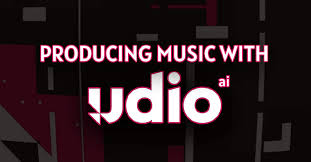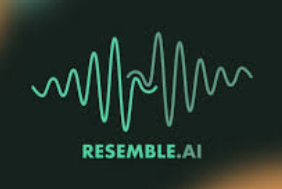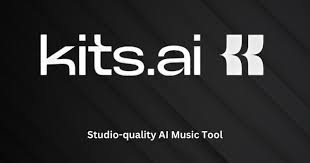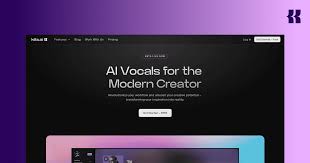Since its public beta launch in April 2024, Udio AI has risen as a powerful “text-to-music” engine capable of producing original music with vocals, lyrics, and instrumentation. But how does Udio AI work, behind the scenes? What technologies fuel it—and what are its strengths and limitations?
In this comprehensive post, we’ll break down the model’s architecture, input/output workflows, its unique features, and provide real-world insights drawn from users and experts. The result is a clear, informative guide built for lasting search relevance.

What Is Udio AI?
Udio is a generative AI music tool developed by a former team at Google DeepMind—including CEO David Ding—released publicly on April 10, 2024. Users can type in prompts describing mood, genre, lyrics, or artist style, and Udio generates two new 30-second tracks, extendable by 30-second increments. It also supports advanced features like audio inpainting for subscribers.
Step 1: Text Prompt and Lyrics Input
To use Udio, users begin by:
Entering a prompt like “nostalgic piano ballad with soft vocals”
Optionally adding custom lyrics using the “Custom” or “Auto-generated” mode
Udio’s front end suggests tags and genres, helping users refine direction. This combination informs the model about musical style, mood, and lyrical content.
Step 2: Genre Matching and LLM Lyrics Generation
Behind the scenes, Udio employs a large language model (LLM) to:
Parse the prompt and identify relevant tags (e.g., “R&B vocals”)
Draft lyrics that align with the theme—if lyrics aren’t provided manually
This gives Udio both the semantic and lyrical blueprint needed to create a cohesive track.
Step 3: Music Synthesis with Proprietary Model
Udio’s actual audio generation happens via a proprietary generative model, disclosed only as “not revealed” publicly . But based on user insights from forums like Vi?Control, its general workflow likely includes:
Audio-Text Paired Training: Trained on a dataset containing music files and descriptive metadata/lyrics
Diffusion or Transformer Architecture: Similar to models like Suno or MusicLM—transforming prompts and lyrics into coherent audio
Multi-Track Output: Generates separate stems (vocals, instrumentation) and merges them for playback
This setup allows Udio to produce music in various styles, including realistic vocals, narrative delivery, and stylistic effects
Step 4: Generation, Remix, and Extend
Once Udio creates two song versions:
Remix: Generate new variations based on altered prompts
Extend: Add another 30 seconds or modify lyrics, building on the initial clip
This iterative workflow provides creative control, refining the output until the desired length and structure are achieved.
Step 5: Export, Download, and Publish
Users can:
Download tracks as
.mp3or video with custom artworkPublish on Udio’s Discover tab, where community members can hear and engage with it
This distribution system encourages sharing and feedback—ideal for creators seeking visibility or inspiration.
What Makes Udio Stand Out?
Realistic vocals: Strongly praised for emotional delivery
User-focused features: Lyrics input, extend/remix tools, custom artwork integration
Generous free tier: 600–1,200 songs monthly during beta
Funding and team pedigree: Backed by Google DeepMind alumni and investors including a16z, will.i.am, Common
Real-World User Feedback
Communities like Reddit and Acoustica report:
“It works with separate instrument tracks… and one thing Udio does well (when lucky) is voices. Some are exceptional.”
Yet users mention occasional artifacts, repetitive structures, and buggy UIs due to beta-phase maturity .
Copyright Challenges
Udio, like Suno AI, is currently involved in legal action with the RIAA over alleged use of copyrighted music to train their models. Udio defends itself by invoking fair use and emphasizing filter systems to suppress replication.
Benefits and Limitations
Benefits:
Fast generation with lyrics and vocals
Effective remixing and song extension tools
Strong free tier and easy-to-use UI
Limitations:
Track length capped (~90 seconds)
Beta-stage quirks, occasional lyric weirdness
Legal uncertainties in training data
FAQ About Udio AI
Can I use lyrics I write myself?
Yes—Udio supports user-input lyrics in “Custom” mode.
How long can Udio songs get?
Each song starts at ~30 seconds; you can extend it one 30-second block at a time, up to ~90 seconds .
Is Udio free?
Yes—beta users get 600–1,200 free creations per month.
Does Udio allow downloads?
Absolutely—you can download final songs as audio or video, including artwork.
Will my lyrics mix well with any genre?
Not always. Users report Udio may override or ignore lyrics if they don’t fit the genre context.
Conclusion: The Art and Logic Behind Udio AI
So, how does Udio AI work? In essence, it blends LLM-driven lyric crafting, advanced music generation models, and iterative user interaction (remix/extend) into a creative workflow that feels intuitive and powerful—even for non-musicians.
Its strengths lie in flexibility and user experience, while its current beta limitations and legal scrutiny point to both the promise and challenges of AI in music. For creators, Udio offers a compelling toolkit—just keep an eye on evolving export rules and song length constraints.
Learn more about AI MUSIC








